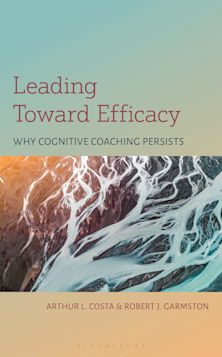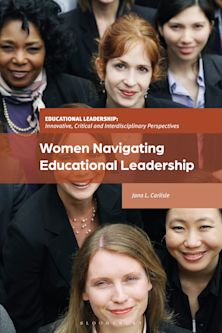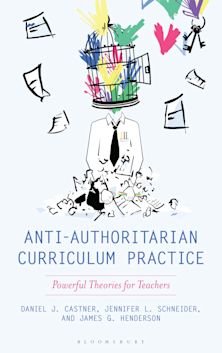- Home
- ACADEMIC
- Education
- Leadership and Management
- Gaining on the Gap
Gaining on the Gap
Changing Hearts, Minds, and Practice
Gaining on the Gap
Changing Hearts, Minds, and Practice
This product is usually dispatched within 1 week
- Delivery and returns info
-
Free US delivery on orders $35 or over
You must sign in to add this item to your wishlist. Please sign in or create an account
Description
Gaining on the Gap: Changing Hearts, Minds, and Practice serves as a guide along the journey taken by six individuals who each played a role in moving a school system along a path where race would not be a predictor for academic success. Join us as we share insights to challenges and victories as well as a close look at our own personal and professional growth.
Table of Contents
Preface
Introduction
Chapter One: The Context
Chapter Two: Creating Organization Conditions to Close Achievement Gaps
Chapter Three: Can Schools Eliminate Gaps?
Chapter Four: Fixing the System, Not the Kids
Chapter Five: The Perfect Storm: Capitalizing on Synergy
Chapter Six: Facilitating Conversations About Race
Chapter Seven: Teaching Across Cultures
Chapter Eight: System-Level Buy-In: A Case Study
Chapter Nine: Gaining on the Gap: Progress, Themes, and Lessons Learned
Afterword
Product details
| Published | Sep 08 2011 |
|---|---|
| Format | Hardback |
| Edition | 1st |
| Extent | 204 |
| ISBN | 9781610482882 |
| Imprint | R&L Education |
| Dimensions | 9 x 6 inches |
| Publisher | Bloomsbury Publishing |
About the contributors
Reviews
-
The achievement gap plagues schools and school divisions around the country. In this compelling book, four staff members and a parent from the Arlington Public Schools (VA), along with former APS Superintendent, Rob Smith, have chronicled the district's more than 12 year attempt to grapple with the difficult issues and move toward the heart of the problem. Looking back over their journey, the APS team believes that solutions to the gap challenge must come from a real awareness of the systemic nature of the problem, the effective and intentional use of data, and a shared responsibility for the development of solutions. There is much to learn from their thoughtfully told stories.
Daniel A. Domenech, executive director, AASA, The School Superintendents Association; former school superintendent
-
The strength of the book is in how a school board, superintendent, and determined staff including teachers tackled a thorny and wicked problem and built slowly an infrastructure that permitted the entire APS staff to deal openly with issues usually left untouched-that of the relationship between race and the achievement gap.
Larry Cuban, Professor Emeritus of Education, Stanford University
-
This is an important story of a school district systematically and systemically diminishing its racial, socio-economic and linguistic achievement gaps. It presents a forthright blueprint for mobilizing schools and the community to make the structural changes necessary to improve the fortunes of its most low performing students.
Allan Alson, educational consultant; former superintendent, Evanston Township High School; founder, Minority Student Achievement Network
-
Reducing and, ultimately, eliminating achievement gaps is a critical task for public school systems today and, indeed, for the nation. The story told by Gaining on the Gap provides valuable insights for School Board members and others who are committed to this task.
Libby Garvey, member, Arlington School Board
-
Gaining on the Gap provides powerful insights into one school district's efforts to eliminate the achievement gap. The collective and varied experiences of the authors reveal the complexities of this issue. Their experiences also give us hope that through honest conversations, sustained professional development, accountability, and use of effective strategies, all students can be successful.
National Association of Pupil Services Administrators
-
For many years I have been telling administrators, 'If you want to lose your job, place the education of poor and minority students first.' Fortunately, the authors of this volume have totally ignored me and sought to find practical and powerful ways to insure that all students receive a first class education. Rather than bemoan the legislative mandates and testing schemes, these authors point us in clear directions for making what historian David Tyack called 'the one best system' a reality in the lives of children and families who most need it to be just that.
Gloria Ladson-Billings, former Kellner Family Distinguished Professor of Urban Education in the Department of Curriculum and Instruction at the University of Wisconsin-Madison


































